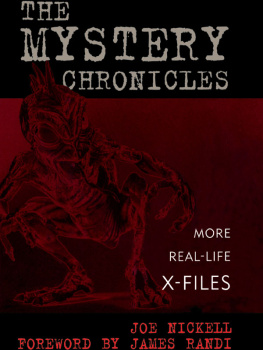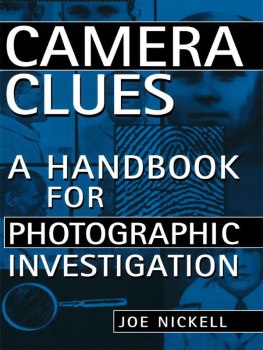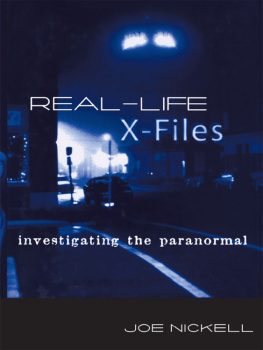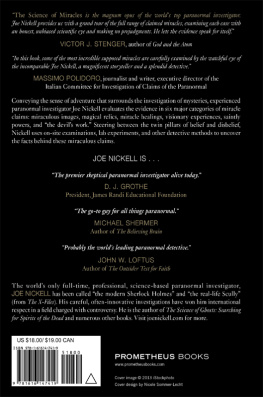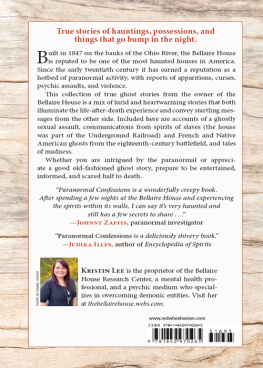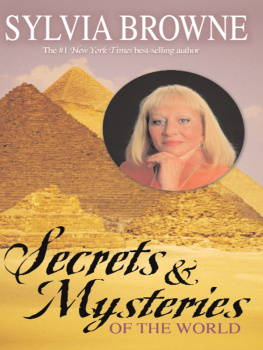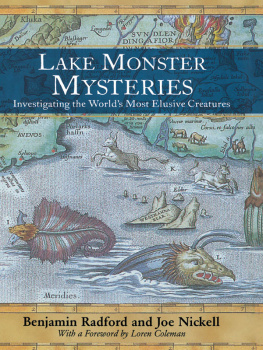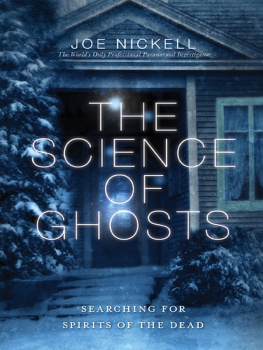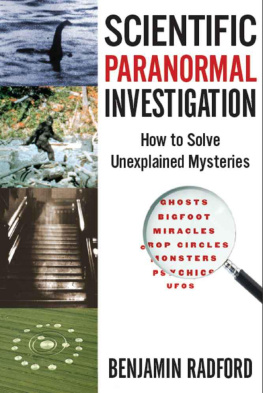Acknowledgments
I am supremely grateful to John and Mary Frantz for their generous establishment of an investigative fund that helps make much of my research possible.
I am once again indebted to my colleagues at the Center for Inquiry (CFI) in Amherst, New York, wheresince 1995I have been Senior Research Fellow of the Committee for the Scientific Investigation of Claims of the Paranormal (CSICOP). These colleagues include Paul Kurtz, chairman; Barry Karr, executive director; Kevin Christopher, director of public relations; Kendrick Frazier, editor of CSICOPs official magazine, Skeptical Inquirer, and Benjamin Radford, managing editor of Skeptical Inquirer. All of these helped in numerous ways.
Research assistance was generously provided by Timothy Binga, director of the Center for Inquiry Libraries. Ranjit Sandhu also provided valuable research, and his considerable word-processing skills repeatedly transformed scribbles into finished articles and articles into this book. Colleague Tom Flynn, editor of Free Inquiry, often provided expert photographic assistance. So did non-colleague (but good friend) Rob McElroy.
Specific production assistance came from Lisa A. Hutter, art director, and Paul Loynes, production. Taking care of many financial problems were Pat Beauchamp and Paul Paulin.
I continue to be deeply indebted to Robert A. Baker, Emeritus Professor of Psychology, University of Kentucky, and John F. Fischer, forensic analyst (retired) at the Orange County, Florida, Sheriffs Department crime laboratory, who have been invaluable over the years as fellow investigators, coauthors, and friends.
I also continue my indebtedness to fellow CSICOP Executive Council members James E. Alcock, Barry Beyerstein, Thomas Casten, Kendrick Frazier, Martin Gardner, Ray Hyman, Lawrence Jones, Philip J. Klass, Lee Nisbet, Amardeo Sarma, Bela Scheiber, and, again, Paul Kurtz.
In addition to the many individuals mentioned in the text, I am also grateful to the following: George E. Abaunza, Brant Abrahamson, Christian L. Ambrose, Dan Barber, Ed and Diane Buckner, James F. Cherry, Eva Clarke, Christopher Densmore, Christopher Hoolihan, Shozo Kagoshima, Joyce Lajudice, William Loos, Vaughn Rees, Etienne Rios, Michael Sandras, Mark Scerbo, Marge Sharp, William Sierichs Jr., Glenn Taylor, Jim Underdown, Cynthia Van Ness, Vance Vigrass, and Dana Walpole.
Outside of the United States, I am also very appreciative to the following: From England, Jane Topping (BBC); in Australia, Ian Bryce, Georgina Keep, and Barry Williams; and in Moscow, Kirill Boliakiu.
This is only the short list. To the many other associates at the Center for Inquiry, my friends and fellow skeptics around the world, and the many others who helped in some way, I express my sincere appreciation.
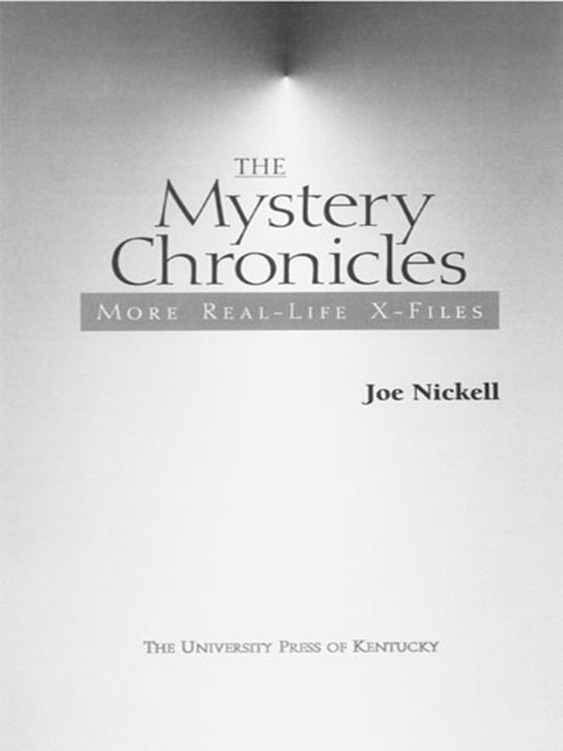
1
Mystery of the Nazca Lines
Etched across 30 miles of gravel-covered desert near Perus southern coast are the famous Nazca lines and giant ground drawings.
This huge sketchpad was brought to public prominence by Erich von Danikens Chariots of the Gods?a book that consistently underestimates the abilities of ancient primitive peoples and assigns many of their works to visiting extraterrestrials. Von Daniken (1970) argues that the Nazca lines and figures could have been built according to instructions from an aircraft. He adds: Classical archaeology does not admit that the pre-lnca peoples could have had a perfect surveying technique. And the theory that aircraft could have existed in antiquity is sheer humbug to them.
Von Daniken does not consider it humbug, and he obviously envisions flying saucers hovering above and beaming down instructions for the markings to awed primitives (presumably in their native tongue).
He views the large drawings as signals (von Daniken 1970) and the longer and wider of the lines as landing strips (von Daniken 1972). But would extraterrestrials create signals for themselves in the shape of spiders and monkeys? And would such signals be less than 80 feet long (like some of the smaller Nazca figures)?
As to the landing-strip notion, Maria Reiche, the German-born mathematician who for years has mapped and attempted to preserve the markings, had a ready rejoinder. Noting that the imagined runways are clear of stones and that the underlying ground is quite soft, she said, Tm afraid the spacemen would have gotten stuck (Mclntyre 1975).
It is difficult to take von Daniken seriously, especially since his theory is not his own and was originated in jest. Paul Kosok (1947), the first to study the markings, wrote: When first viewed from the air, [the lines] were nicknamed prehistoric landing fields and jokingly compared with the so-called canals on Mars. Moreover, one cropped photo exhibited by von Daniken (1970), showing an odd configuration very reminiscent of the aircraft parking areas in a modern airport, is actually of the knee joint of one of the bird figures (Woodman 1977). (See . Etched upon the Nazca plains in Peru are giant drawings like these. Their large size has fueled misguided speculation that they were drawn with the aid of ancient astronauts or by sophisticated surveying techniques, the secrets of which are lost.
Closer to earth, but still merely a flight of fancy, in my opinion, is the notion of Jim Woodman (1977) and some of his colleagues from the International Explorers Society that the ancient Nazcas constructed hot-air balloons for ceremonial flights, from which they could appreciate the great ground drawings on the pampas. Even if one believes that this theory is also inflated with hot air, one must at least give Woodman credit for the strength of his convictions. Using cloth, rope, and reeds, Woodman and his associates actually made a balloon and gondola similar to those the Nazcas might have made had they actually done so. Woodman and British balloonist Julian Nott then risked their lives in a 300-foot-high flyover of the Nazca plain. When their balloon began descending rapidly, they threw off more and more sacks of ballast, but finally had to jump clear of their craft some 10 feet above the pampas. Free of the balloonists weight, the balloon shot skyward and soared almost out of sight, only to finally crash and drag briefly across the ground.
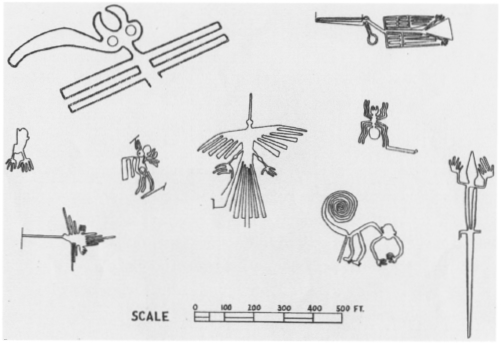
FIGURE l-1. Etched upon the Nazca plains in Peru are giant drawings like these.
Their large size has fueled misguided speculation that they were drawn with the aid of ancient astronauts or by sophisticated surveying techniques, the secrets of which are lost.
The Nazca markings are indeed a mystery, although we do know who produced themvon Daniken notwithstanding. Conceding that Nazca pottery is found in association with the lines, von Daniken (1970) writes: But it is surely oversimplifying things to attribute the geometrically arranged lines to the Nazca culture for that reason alone.
No knowledgeable person does. The striking similarity of the stylized line figures to those of known Nazca art has been clearly demonstrated (Isbell 1978, 1980). In addition to this iconographic evidence must be added that from carbon-14 analysis: Wooden stakes mark the termination of some of the long lines and one of these was dated to c.e. 525 (80). This is consistent with the presence of the Nazca Indians who flourished in the area from 200 b.c.e. to about c.e. 600. Their graves and the ruins of their settlements lie near the drawings.
The questions of who and when aside, the mystery of why the markings were made remains, although several hypotheses have been proffered. One is that they represent some form of offerings to the Indian gods (Mclntyre 1975). Another is that they form a giant astronomical calendar or star chart. Writing in

